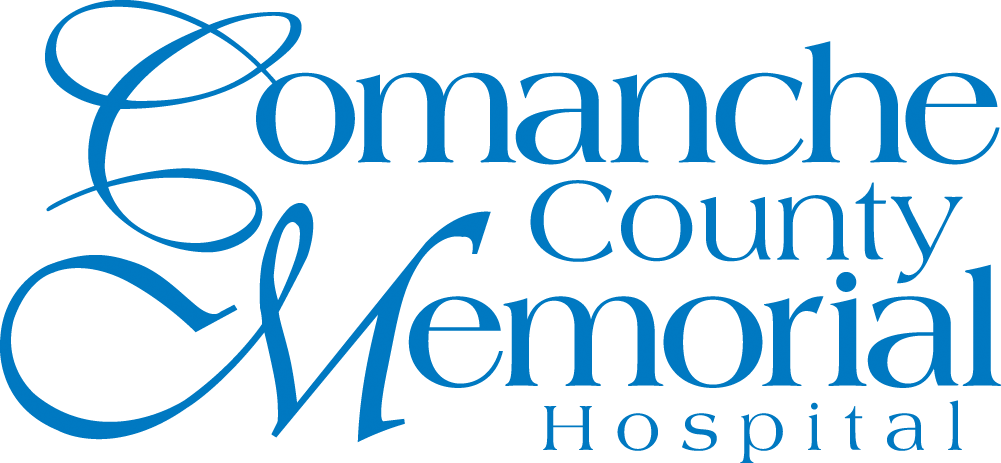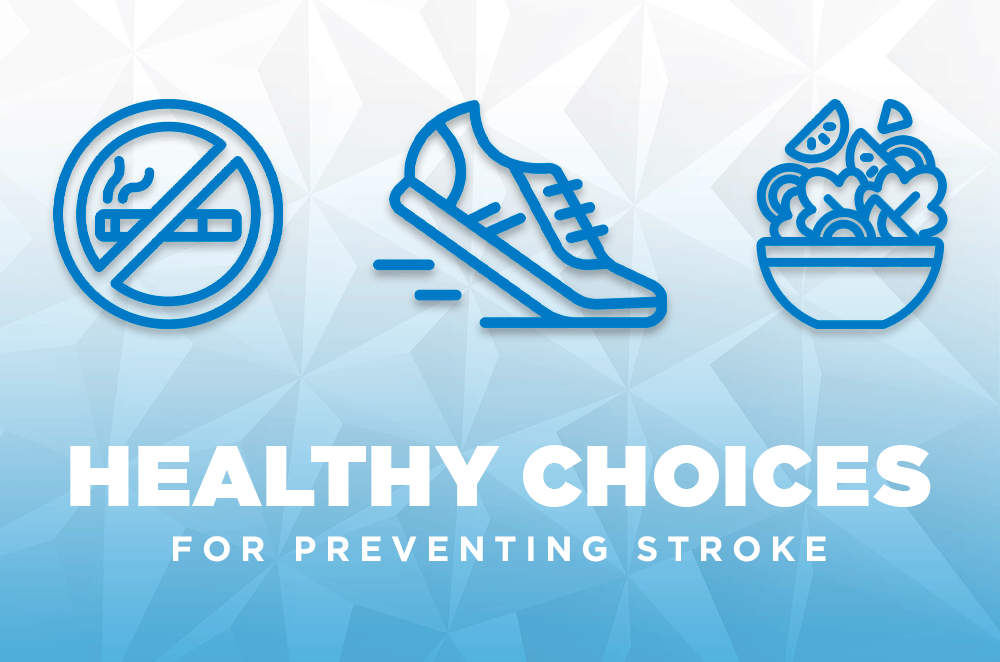Healthy Choices for Stroke Prevention
Adults make nearly 35,000 choices daily. The kinds of choices we make can affect everything from how long we choose to brush our teeth to what shoes to wear. During the month of May, we recognize stroke awareness and how the choices we make every day can play a role in the prevention of strokes. Before looking at the 3 healthy choices for stroke prevention, we must first understand what a stroke is and what causes it.
What is a Stroke?
According to the Mayo Clinic, an Ischemic stroke occurs when the blood supply that carries oxygen to the brain is interrupted or there is a reduced flow. Blood is how the brain receives oxygen and when that blood flow is reduced, oxygen does not reach the brain. Without oxygen, brain cells begin to die within minutes. Ischemic strokes account for 87% of all strokes
Another type of stroke is a hemorrhagic stroke. This type of stroke is the result of ruptured blood vessels that is usually caused by high blood pressure. Other stroke types include transient ischemic attack, or a mini-stroke, and cryptogenic strokes, when the cause of the stroke cannot be determined.
What causes stroke?
There are many causes of stroke, some of which are preventable while others are caused by medical conditions or genetic predispositions. Some causes of stroke include:
- High blood pressure – This is also known as hypertension and is what could be responsible for hemorrhagic strokes. High blood pressure is usually diagnosed when blood pressure is consistently 130/80 or higher.
- Tobacco use – Smoking or chewing tobacco and using nicotine products causes your blood pressure to increase. Additionally, smokers have a fatty build up that occurs in the artery of the neck that could obstruct blood flow. The risk is also there for those who inhale second-hand smoke.
- Weight and exercise – Your chances of stroke increase if you are overweight and do not participate in regular exercise.
Other causes of stroke can depend on family history, gender, race, or genetic conditions that block blood flow to the brain. It is because of the wide range of stroke causes, that we need to take on a broader approach to stroke prevention. Making small changes in our daily routine will help decrease our risk of stroke.
How can I make better health choices?
-
Exercise
In today’s busy world, setting aside time for physical activity and movement can be difficult. Movement can look different for everyone. Maybe you don’t have the time to stop by the gym before or after work and that is okay. Choose alternative activities to what you are used to in order to squeeze in movement. For example, opt for taking the stairs at work instead of the elevator. Add a standing desk option to your work space or swap out your desk chair for an exercise ball to sneak in quick movement between tasks.
-
Nutrition
Because some of the leading causes of stroke are linked to weight, it is important to take into consideration the choices we make surrounding the food we eat. Choose foods such as oatmeal and beans that are high in fiber. Additionally, fatty-acids promote brain health and help the brain to function properly. Omega-3-rich foods aid in the prevention of stroke. Great sources of omega-3 foods include flaxseeds and walnuts. Even when it comes to sweets, there are still great choices that are pro-brain health! Switch up the milk chocolate for dark chocolate, that has a high magnesium content.
-
Quit the use of tobacco products
Within the myriad of reasons that tobacco use is harmful to the human body, it is a high contributor to heart disease and stroke. The use of tobacco and nicotine products disrupts a healthy blood flow throughout your body. Quitting the use of these products is not an easy journey so the first choice you can make is to get on a treatment plan that will aid in kicking the habits. You and your doctor can work together to find a plan that works best for you.
BE FAST
Strokes can occur randomly and suddenly. Bringing awareness to strokes calls for educating on what strokes look like and how to know when a stroke is occurring. Medical professionals use the acronym “B.E.F.A.S.T” to refer to how to notice when someone is having symptoms of a stroke
B – Balance – The person is struggling to maintain balance or is dizzy
E – Eyes – Vision is blurred in one or both eyes and the person is struggling to focus their eye sight
F – Facial drooping – one side of the face is drooping, not moving along with the other side or feels numb. If this occurs, ask the person to smile and note if the smile is even or not.
A – Arm weakness – One arm may feel weak or numb. When raised, the arm may drift down and not be able to be controlled by the person
S – Speech difficulties – The person may begin to slur their speech
T – Time to call 911 – the chances of survival or minimizing the effects of a stroke are greatly impacted if the person experiencing the symptoms can get medical attention as soon as possible. Call 911 immediately if you notice the symptoms of a stroke.
Comanche County Memorial Hospital is a Primary Stroke Center and features state of the art stroke care technology. To learn more about the care we provide to stroke patients please visit https://www.ccmhhealth.com/stroke-care/
Resources
https://www.cdc.gov/stroke/facts.htm
https://www.mayoclinic.org/diseases-conditions/stroke/symptoms-causes/syc-20350113
Disclaimer
The Comanche County Memorial Hospital website does not provide specific medical advice for individual cases. Comanche County Memorial Hospital does not endorse any medical or professional services obtained through information provided on this site, articles on the site or any links on this site.
Use of the information obtained by the Comanche County Memorial Hospital website does not replace medical advice given by a qualified medical provider to meet the medical needs of our readers or others.
While content is frequently updated, medical information changes quickly. Information may be out of date, and/or contain inaccuracies or typographical errors. For questions or concerns, please contact us at contact@ccmhhealth.com.

